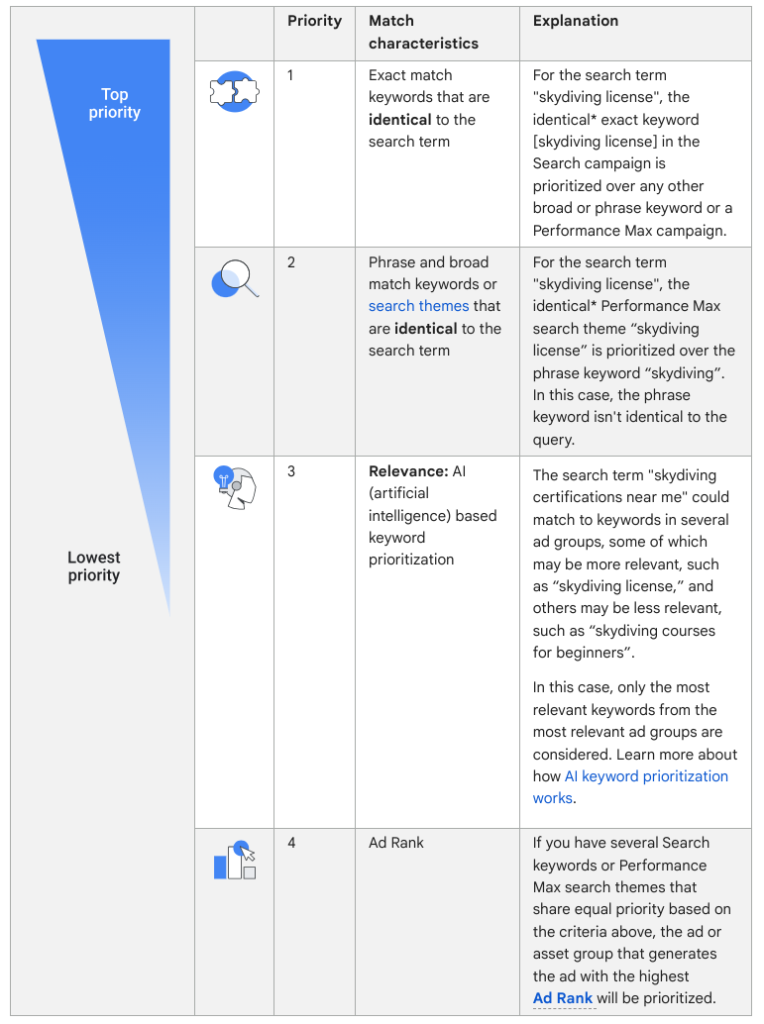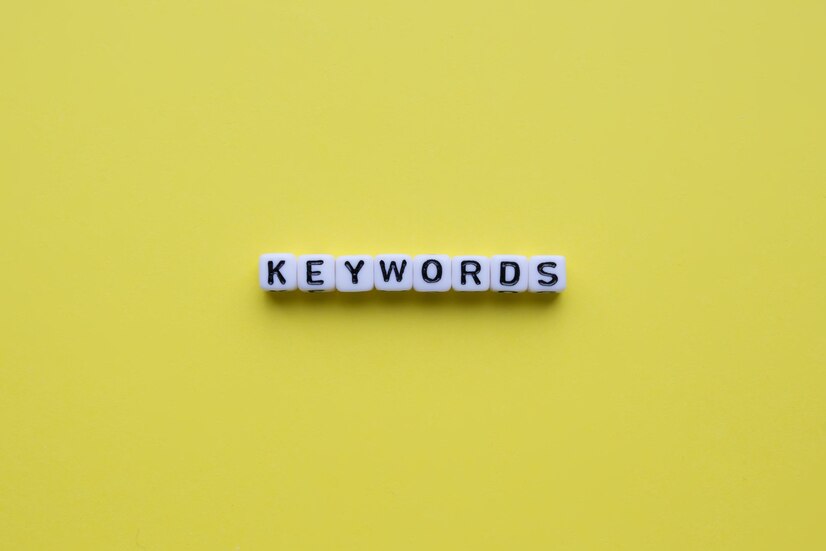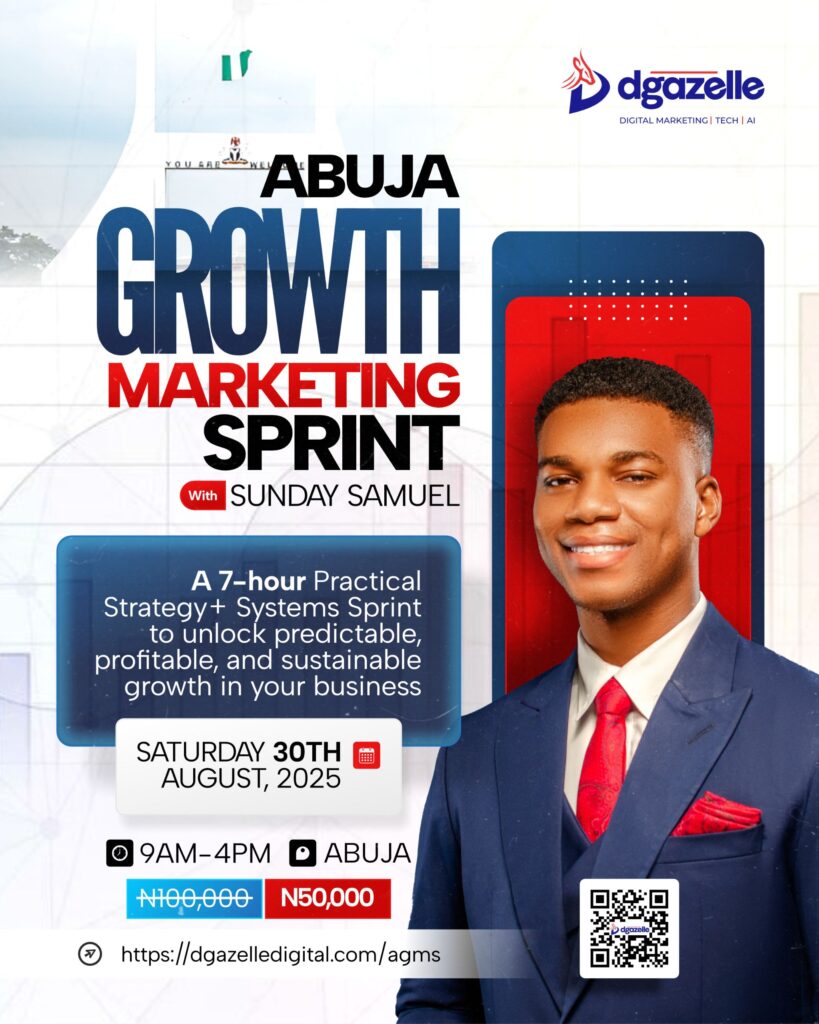Have you ever wondered, how your keyword in your content is matched with searches when there are more than one related keywords (and/or search theme) in your account that also match the search term.
Google has recently updated and clarified what it refers to as keyword prioritization or search theme priority and I’ll explain it to you in plain English and explain what it means for your Google Ads account.
Although the foundation for prioritizing keywords and search themes for query matching is not new, recent developments in AI have significantly changed it. And now is an excellent moment to explore the workings of query matching controls and keyword prioritization. Organizing your campaigns and ad groups, creating lists of keywords (both positive and negative), choosing keyword match types, and leveraging search themes to improve performance will all be made easier with this improved foundation.
We’ll go over different situations, what to consider for each rule of prioritizing, and what you need to know about the most recent query matching controls.
keyword matching and keyword prioritization in Google Ads
Keyword matching, using keyword match types, is a system that figures out whether or not you’re eligible to show an ad on a user’s search.
Because of how keyword matching works, it’s common to have multiple keywords in your account that can match with the same query. However, you can only show one search ad at a time.
For example, let’s say a user searches for “Red Hand Bags.” That could match to:
- Your generic bag search campaign, which has the keyword “ red bag.”
- Your discount bag search campaign, which has the keyword [led red bag on sale].
- Your dynamic ad group in a search campaign, which has ad targets on all of your red bag product pages.
How will Google determine which campaign “wins” and shows an ad?
That’s where keyword prioritization comes in. When multiple ads are eligible to match to a user’s query, an elaborate AI-powered keyword prioritization occurs to determine which campaign, ad group, keyword, and ad are “put forward” into the auction, to compete for that user’s click.
The five pillars of Google Ads keyword prioritization.

Top Priority: Identical Exact Match Keywords
Your keyword will take precedence over other keywords and join the auction if the keyword is is exactly the same as the user’s inquiry. Consider this to be similar to “old school” precise match still winning.
Keep in mind that the user’s inquiry must correspond with the intent or meaning of your term in order for it to be considered an exact match. For instance, if a person searches for “Red Hand Bag ” using the keyword [hand bag], that would be regarded as an exact match (near variant) because “red hand bag” and “hand bag” are synonyms. The laws of keyword matching would allow you to display an advertisement.
However, from the standpoint of prioritizing, “hand bag” and “red hand bag” are not exactly the same. Therefore, if you have a keyword like “hand bag” or even “red hand bag” elsewhere in your account, your [red hand bag] keyword would not automatically advance to the auction.
2nd Priority: Phrase, Broad Match, Or Search Themes That Are Identical To The Query
The terms “hand bag” and “red hand bag” are obviously not interchangeable. However, what about the singular versus plural forms of “red hand bags” and “red hand bag”? For example, “red hand bag” as opposed to a misspelled one-letter word, like “red han bag.”
When it comes to keyword priority, synonyms, misspellings, and plural forms of keywords are all evaluated differently, even if they can all “match” to exact match keywords.
- Misspellings (hand bag versus han bag): Considered an identical match, will receive top priority when it matches an exact match keyword.
- Plurals (red hand bag versus red hand bags): Not an identical match, will not receive top priority if it matches an exact match keyword.
What happens if you don’t have an exact match keyword that is exactly the same as the user’s search query? We now know that exact match keywords are given priority.
If the user’s search is the same as a phrase match keyword, wide match keyword, or Performance Max search theme, Google Ads will seek for it.
The same guidelines as previously stated apply when we use the term “identical”: the specific letters and words of your keyword or search topic must precisely match what the user input, including misspellings, excluding synonyms and plurals.
3rd: Ad Rank
The keyword or search theme with the highest ad rank will advance to the auction when you have many at the same priority level.
Again, what is ad rank? For our purposes, the simplest explanation is that your bids and Quality Score are used to determine your ad rank. Your ad rank will rise in proportion to the amount you bid, increasing your chances of entering the auction and, ideally, winning it. Your chances of entering and winning the auction also increase with the caliber of your advertisements.
As a result, the campaign with the higher ad rank will shift when other campaigns in your account are qualified to display an ad and are at the same degree of priority.
4th and Final: AI-powered keyword prioritization
Let’s examine how artificial intelligence drives term prioritization today since discussing new Google Ads capabilities would be incomplete without mentioning AI.
The most likely scenario in your account will be that the user’s search is not similar to an existing keyword or search theme, despite the fact that we have spent a lot of time detailing what occurs with identical results. This implies that a lot of your keywords, search topics, and dynamic ad targets may match it.
AI comes into play. Your account’s qualifying targeting types will all be examined via AI-based keyword prioritization, including:
- Keywords
- Dynamic ad targets
- Search themes
- Performance Max campaigns without search themes
and choose the most relevant ones to be considered in the auction.
“Relevant” doesn’t mean “how identical it is to the keyword.” Relevant also doesn’t mean ad relevance, the component of Quality Score that looks at the relationship between the user’s search and your ad.
For AI-based keyword prioritization, relevance looks at the meaning of the user’s search, all the keywords in an ad group, and the landing pages within the ad group. From there, machine learning would figure out which ad is most likely to entice that user’s click.
What this implies: The Google Ads keyword prioritizing criteria have three effects.
We are now moving from the facts about Google Ads to the thoughts of Jyll Saskin Gales. Google’s keyword priority guidelines have a wide range of possible ramifications. I want you to think about these three:
1. Lack of control in keyword prioritization
First, you are not as in charge of the searches you advertise on as you may believe. Long-term outcomes will be better for those that embrace automation with a unified campaign structure, offering enough funding and data integration to power Google’s AI, than for those who try to maintain control. You could certainly react to this news by manually bidding and adding hundreds of exact match keywords to your account, but you will be wasting all of your time fighting the machine instead of making it work for you by adjusting bids and combatting negatives. I don’t think that sounds like success or fun.
2. Dynamic Search Ads are less of a priority
Second, there is a prioritizing problem with Dynamic Search Ads. For the record, the search campaign setup process also fails them. A dynamic ad group can only be added after the campaign has been created using a conventional ad group; it cannot be generated during the current Search campaign setup procedure. I believe that dynamic ad groups will soon be “upgraded” to Performance Max, especially as DSAs already fuel Performance Max’s search component. You could want to start experimenting with different tactics, such as using broad-match keywords in responsive search ads, if you’re an advertiser who frequently uses DSAs.
3. Ad rank is still important.
Third, one of the most crucial elements in Google Ads success is still ad rank. No matter which searches you match with, you still have the most power over your bids and your Quality Score to raise your ad rank, even though other elements like user context, auction competition, and ad assets are also crucial. The irony of Google Ads is that while its features and tools evolve over time, its key principles—such as bid strategy and Quality Score—do not.
Conclusion: consider Google Ads keyword prioritization, when optimizing your keyword lists
Without taking into account how Google advertisements keyword prioritizing may affect the queries your advertisements match with, it can be simple to concentrate solely on your keyword match type mix. When you need to rapidly forecast how your main keywords might match up with possible searches, make sure to bookmark the above tutorial and use it in your Google Ads audits. See how our solutions can optimize the success of your Google Ads campaign for additional assistance in optimizing your Google Ads keywords.
Unlock Your Brand’s Potential with DgazelleDigital! Let us drive your growth, engagement, and results to new heights.







